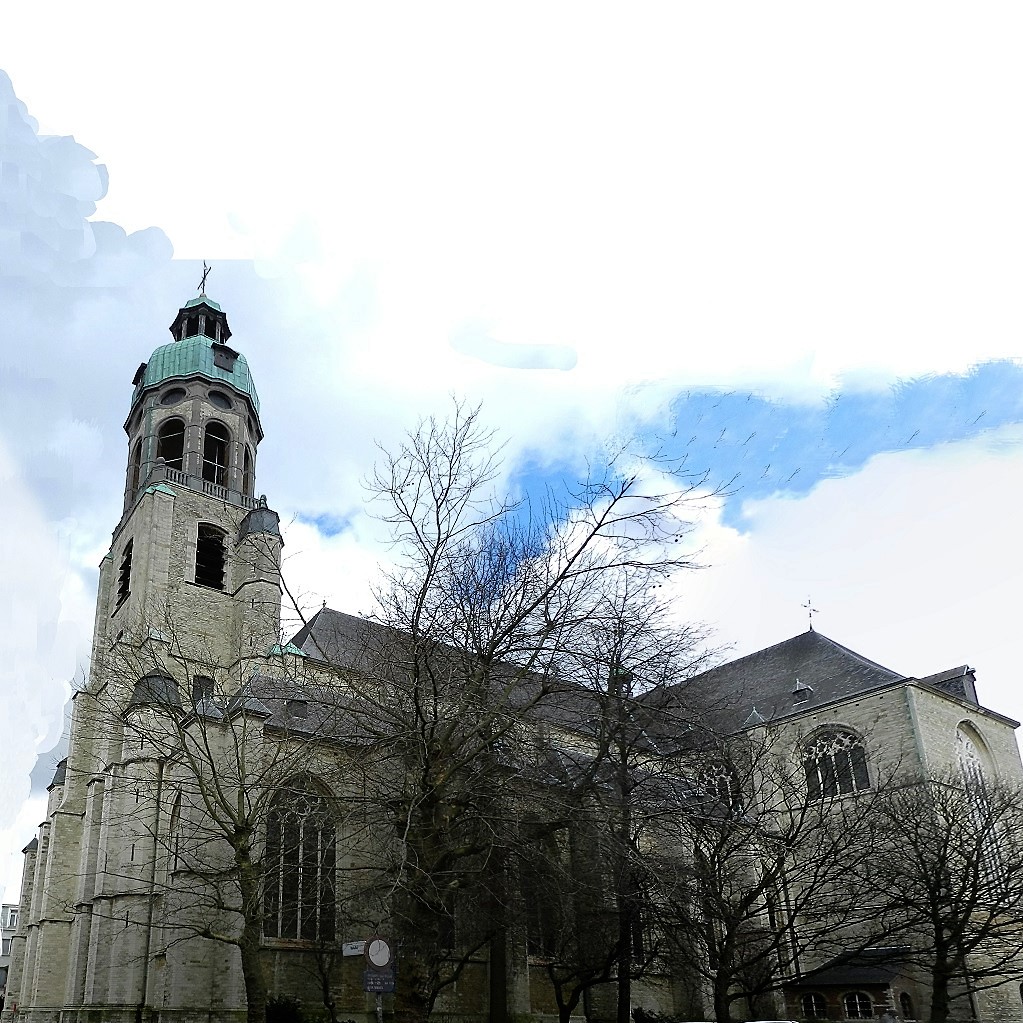Antwerp's St Andrew's Church, a revelation.
The patron saint, patron of the neighbourhood
Several of the neighbourhood’s streets were named after the church’s patron saintThis is a title that the Church bestows on a deceased person who has lived a particularly righteous and faithful life. In the Roman Catholic and Orthodox Church, saints may be venerated (not worshipped). Several saints are also martyrs. Andrew (Dutch: Andreas or Andries).
For instance, the street immediately across the church’s main side entrance at the south side of the church has been called Sint-Andriesstraat (St Andrew Street) since the street’s construction in the early 16th century. Going down to the pump (Dutch: pomp) on the southern churchyard, this street was also known as ‘Pompstraat’ since the end of the 17th century. By the middle of the 18th century, however, the southern churchyard had become a place of ‘indecent behaviour’, and the churchyard was closed off and fenced in. The stone pump column was then transferred to a permanently accessible draw-well in the neighbouring Pompstraat. Decorated with a statue of St Andrew, the pump was later put against the wall of a house – but upon the introduction of water pipes, the pump became obsolete and was finally removed in 1904.
After the parish church’s consecrationIn the Roman Catholic Church, the moment when, during the Eucharist, the bread and wine are transformed into the body and blood of Jesus, the so-called transubstantiation, by the pronouncement of the sacramental words. in 1529, the street at the church’s south side became known as Nieuwe Kerkstraat (New Church Street), further called ‘Sint-Andrieskerkstraat’ (St Andrew Church Street) in 1545. The name was often abbreviated as Kerkstraat (Church Street). When the use of specific street names and numbers was introduced in 1856, the street was officially given its (current) name: Sint-Andriesstraat (St Andrew Street), so as to avoid confusion with Kerkstraat (Church Street) near St Willibrord Church.
For its part, Sint-Andriesplaats (St Andrew Square) originated after the reorganization in about 1867; during this neighbourhood ‘clearing’, an entire housing block (including several alleys) was demolished.
The easternmost alley at the north side of Lange Vlierstraat, 16th-century Sint-Andriesgang (St Andrew Alley) comprised six small houses and disappeared when the street was widened by 1867. During its final years of existence, the passage had apparently lost its saintly lustre: by then, it was called ‘Strontgang’ (Smelly Alley) …
The saint’s popularity may further be understood from the number of houses, businesses and institutions named after him. The name ‘St Andrew’ can still be seen crowning some of the neighbourhood’s grand houses – such as a clothes’ shop on the corner of Kammenstraat and Nationalestraat, a pharmacy in Nationalestraat, and the Cultureel ontmoetingscentrum Sint-Andries (coStA, the municipal St Andrew Centre for Cultural Encounter) at Sint-Andriesplaats since 1994.
Until the French Rule, there were about twenty-five Antwerp townhouses of which St Andrew was the patron saint. Twenty-one of these were simply called ‘Sint-Andries’ (St Andrew), seven of which were situated within St Andrew’s parish alone; three townhouses were called ‘Sint-Andries Cruys’ (Cross of St Andrew). Antwerp’s fourth borough, moreover, is officially called ‘Sint-Andrieskwartier’ (St Andrew’s Quarter).
The connection between the patron saint and the neighbourhood further transpires from the names of local associations, regardless of their philosophical persuasion. Since 1975, the pluralist committee ‘Sint-Andrieskwartier herleeft’ (Revival of St Andrew’s Quarter) seeks to keep the neighbourhood’s sociocultural history alive; on the other hand, the neighbourhood committee ‘Stuurgroep Sint-Andries’ (Steering Committee St Andrew) prioritises social involvement.

